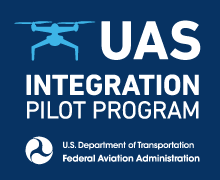 Emergency Medical personnel have only up to 10 minutes to reach a victim, administer CPR, and the shock of an automated external defibrillator (AED) to try and save the life of a Cardiac Arrest victim. When seconds count, waiting for an ambulance to arrive may not be the most reliable and rapid means of reaching the patient. Reno, Nevada is one of 10 cities within the U.S. that has recently been approved by the FAA to fly AED carrying Drones “below visual line of sight”, or BVLOS, starting in 2020. When 911 is contacted, the operator will dispatch both an ambulance and a drone carrying an AED, while coaching the caller through CPR chest compressions until either the drone or ambulance arrives first. This is a major landmark moving us into the future of both AED and drone technology. The other cities involved in the FAA’s 2 ½ year Unmanned Aircraft Systems Integration Pilot Program (IPP) study are:
Emergency Medical personnel have only up to 10 minutes to reach a victim, administer CPR, and the shock of an automated external defibrillator (AED) to try and save the life of a Cardiac Arrest victim. When seconds count, waiting for an ambulance to arrive may not be the most reliable and rapid means of reaching the patient. Reno, Nevada is one of 10 cities within the U.S. that has recently been approved by the FAA to fly AED carrying Drones “below visual line of sight”, or BVLOS, starting in 2020. When 911 is contacted, the operator will dispatch both an ambulance and a drone carrying an AED, while coaching the caller through CPR chest compressions until either the drone or ambulance arrives first. This is a major landmark moving us into the future of both AED and drone technology. The other cities involved in the FAA’s 2 ½ year Unmanned Aircraft Systems Integration Pilot Program (IPP) study are:
- Choctaw Nation of Oklahoma, Durant, Oklahoma
- City of San Diego, California
- Virginia Tech – Center for Innovative Technology, Herndon, Virginia
- Kansas Department of Transportation, Topeka, Kansas
- Lee County Mosquito Control District, Ft. Myers, Florida
- Memphis-Shelby County Airport Authority, Memphis, Tennessee
- North Carolina Department of Transportation, Raleigh, North Carolina
- North Dakota Department of Transportation, Bismarck, North Dakota
- University of Alaska-Fairbanks, Fairbanks, Alaska
The FAA and USDOT’s studies involving AED delivery by drones are two-fold. Most importantly, they will help to place life-saving technology in the hands of bystanders, along with providing the FAA with ample information to create new drone laws and ordinances for public and commercial use. These will most likely support more use of low-altitude flight operations, initiate better communications and cooperation between local and state government and business interests, along with tackling the privacy and security issues that will arise. According to the American Heart Association, over 350,000 out-of-hospital cardiac arrests occur in the U.S. every year. 70% of these occur at home. Drone-delivered AEDs can fly up to 62mph directly to a victim using the GPS signal from a bystander’s cell phone 24/7. They can deliver to balconies and windows in high-rise buildings, reducing the time it may take for EMS to access their floor. With the use of the drone’s camera, the 911 operator can assess a victim while coaching the bystander through CPR and using the AED. Tests and studies are in the early stages for all cities involved in this program, but this model has been researched in Sweden since 2006. They have demonstrated that drone-delivered AEDs arrived to victims faster than EMS in every case. This will undoubtedly save more lives, while paving the way for new innovations in drone delivery!
Written by Blaire Czarniecki
Customer Service Director
Fact checked by Phillip Woods, BA, NREMT-P, FP-C
Blaire attended the University of Tennessee where she graduated with a Bachelor of Science in Human Ecology- Child and Family Studies. She has been in the Automated External Defibrillator (AED) industry for over eight years and is the Director of Customer Service for Coro Medical. Blaire is also an American Red Cross-certified CPR/AED/First Aid Instructor, highly trained by each manufacturer on their specific AEDs, and knowledgeable regarding ALL State AED regulations and legislation.
“I know that every day I come to work, I am playing a part in saving someone’s life. I am passionate about these devices and am always looking for new and innovative ways to spread awareness and knowledge about Sudden Cardiac Arrest (SCA). I look forward to the day when everywhere I go, I will see an AED—when SCA will no longer take any lives.”
Last updated April 23, 2019






